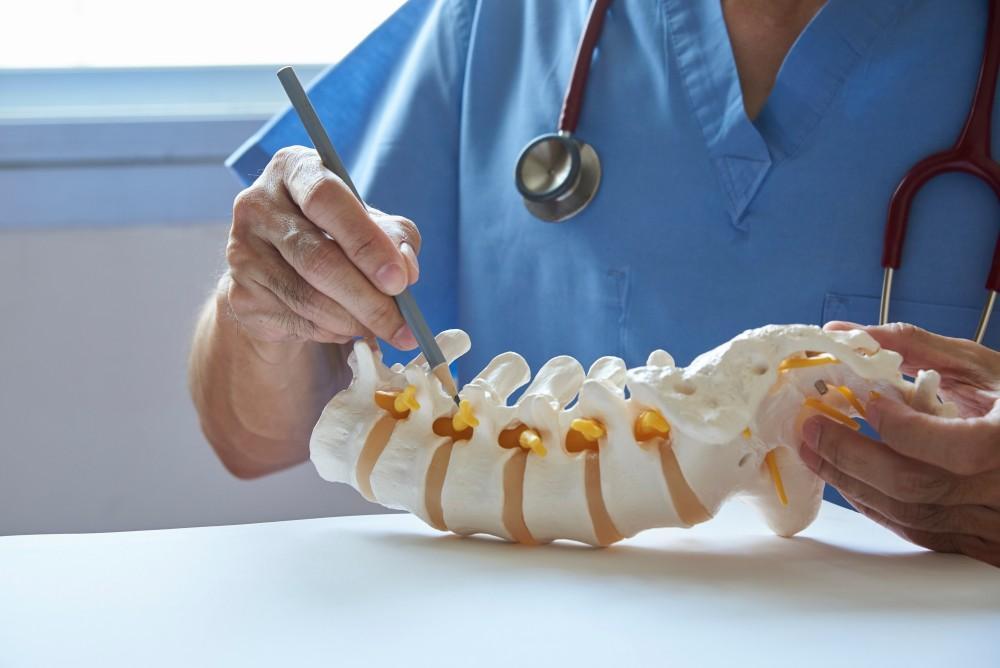
The Sacroiliac Joint: An Often Overlooked Cause of Back Pain

The sacroiliac (SI) joints connect the sacrum, the triangular bone between the lumbar (lower back) spine and the tailbone (coccyx), to the hip bone. These sturdy joints provide stability for the spine, act as shock absorbers, and help offset the load of the upper body on the lower limbs.
These joints also protect the lowest-motion part of the spine, vertebrae L5-S1, through both their limited movement and the extensive network of strong, resilient ligaments that interconnect with the L5-S1 segment and muscles, including the gluteus maximus and the piriformis muscle.
But did you know that the SI joints are often overlooked as the source of back pain?
At Vertrae®, board-certified neurosurgeon Dr. Kamal R. Woods treats back pain from any number of spinal conditions, such as sciatica and spinal stenosis. Sometimes, though, the problems stem from the SI joints, either when they move too much or not enough. Here’s what he has to say about their role in back pain.
SI joint dysfunction
If your SI joints aren’t functioning properly, they can cause lower back and/or leg pain. Leg pain from SI dysfunction can be difficult to distinguish from the radiating pain caused by lumbar disc herniation or spinal cord nerve impingement (sciatica), as they can feel quite similar.
Nevertheless, some doctors suspected the SI joint was a common cause of low back and/or leg pain, even though the challenges of accurate diagnostic testing made it difficult to prove. Today, using updated diagnostic techniques, it’s generally believed that the SI joint is responsible for 15%-30% of lower back pain cases.
SI joint dysfunction consists of three primary mechanisms:
1. Too much movement (hypermobility or instability)
Too much movement causes the pelvis to feel unstable and may lead to pain, which is generally felt in the lower back and/or hip, and it may radiate into the groin area.
2. Too little movement (hypomobility or fixation)
On the other hand, too little movement can lead to muscle tension, pain, and limited mobility. The pain is usually felt on one side of the lower back or buttocks, and it can radiate down the back of the leg, similar to sciatica.
3. Inflammation of the sacroiliac joint (sacroiliitis)
Inflammation in the SI joint can also lead to pelvic pain and stiffness. SI dysfunction can cause the inflammation, or the inflammation may arise with normal function but come from an infection, rheumatoid condition, or other cause.
SI dysfunction is more common in young and middle-aged women, and those who are pregnant or who recently delivered may be more susceptible to sacroiliac joint pain.
SI risk factors
Your risk for developing SI dysfunction and pain include:
Gait issues
Problems such as differences in leg lengths or scoliosis can place more pressure on one side of the pelvis, leading to wear-and-tear in the SI joint and an increased risk of pain.
Pregnancy or recent childbirth
Pregnancy can lead to SI joint pain for a number of reasons: weight gain, hormonal changes that relax the ligaments, and pelvic changes associated with delivery. In some cases, the ligaments don’t strengthen after delivery, leading to continued pain and instability.
Repetitive motion
When you repeatedly stress the joint, such as when playing contact sports; performing regular, heavy lifting; or working at labor-intensive jobs, your SI joint may bear the brunt of the pressure and respond with pain, especially if your pelvic and/or lower back muscles are unconditioned.
Treating SI joint pain
Dr. Woods always starts with conservative options, reserving surgery only for those for whom all other treatments have failed. Some include:
- Pain medication: OTC pain relievers and anti-inflammatory medications for mild-to-moderate pain relief or prescriptions for muscle relaxants or narcotics for severe, acute pain
- Manual manipulation: provided by a chiropractor, osteopathic doctor, or other qualified health professional with the goal of reducing joint fixation and muscle tension, and restoring range of motion
- Supports or braces: a pelvic brace wrapped around the waist and pulled snugly can stabilize the area
- Sacroiliac joint injections: A local anesthetic combined with a steroid to reduce inflammation and help alleviate pain; can help minimize pain so you can engage in physical therapy
If these measures are not successful, Dr. Woods may perform a sacroiliac joint fusion. The goal is to immobilize the SI joint by grafting the ilium and sacrum together.
If you’re having lower back pain, especially if it radiates into your lower extremities, you may be experiencing sacroiliac joint dysfunction. To learn more about this condition, or to schedule a consultation with Dr. Woods, call Vertrae® at 844-255-2225, or book online with us today.
You Might Also Enjoy...


4 Benefits of Outpatient Spine Surgery

Am I a Candidate for Kyphoplasty?

Pulled Muscle vs. Pinched Nerve: What's the Difference?

4 Subtle Signs of Sciatica

